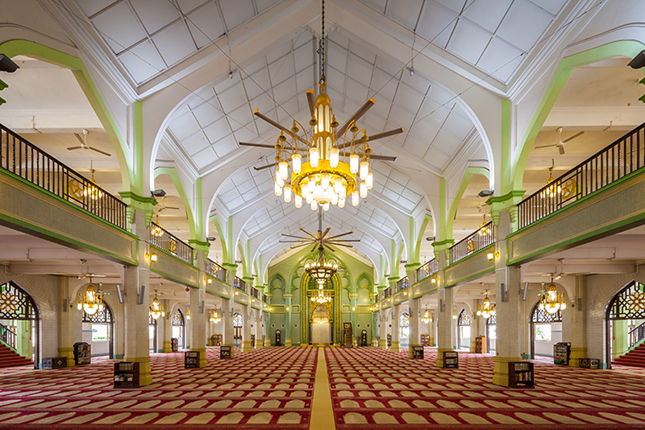Exploring Singapore's Unique Heritage
- charlene929
- Aug 12, 2020
- 4 min read
Updated: Nov 6, 2020
A former British trading post, Singapore has come a long way since 1819. Skyscrapers and out-of-this world architecture surround the Marina Bay skyline. World-class cuisines compete with a heritage of fantastic local food. Ethnic districts showcase the multi-cultural history of Singapore, while the country’s colonial and wartime past has been well preserved. It has one of the highest percentages of green spaces of any city in the world; explore Nature reserves, islands, the award-winning Gardens by the Bay and the 156-year old UNESCO-designated Botanic Gardens.
Let’s take a walk down Singapore’s history and explore gazetted National Monuments!
The Istana
Completed in 1869, the Istana was home to Singapore’s British Governors during its colonial period. It now serves as an office to the President of Singapore and a venue to host foreign dignitaries when they visit Singapore. You will be surprised to learn that this historical site is located along the famous Orchard Road belt - albeit hidden with the security guard posts as the only tell-tale sign. Accessible to the public only on 5 public holidays (Chinese New Year, Labour Day, Hari Raya, National Day and Deepavali) it is also available virtually. Explore its beautiful colonial-styled rooms and the grounds of this beautiful monument. Click here to learn more about its history and here for the virtual tour.
Fullerton Hotel
First established in 1825 as Fort Fullerton, its location at the mouth of the Singapore River protected Singapore’s waters and trade. However, merchants were afraid that the proximity of the fort to their riverside warehouses made them vulnerable to attacks, hence Fort Fullerton was demolished in 1865. In its place, the current building (previously known as the Fullerton Building) was completed in 1928, serving as a General Post Office and home to several government departments. It served as a hospital during World War II and used by the Japanese forces as their main headquarters during the Japanese Occupation. The building continued functioning as a government office until 1996 and was converted into the hotel we know today in 2001
Cavenagh Bridge
Located in front of the Fullerton Hotel, the oldest suspension bridge in Singapore, Cavenagh Bridge was completed in 1869. The bridge is made out of cast iron and the entire structure was actually manufactured and shipped from Glasgow! Prior to the construction of the bridge, people had to either take a ferry across the river or pay a small toll fee to use Elgin Bridge (which was a small wooden footbridge at the time). The bridge was named after Sir William O. Cavenagh, then- governor of the Straits Settlements, and you can spot his family crest at the top of the bridge. Steel plates featuring the bridge’s engineers is also featured. The most fascinating detail of the bridge are the two signs prohibiting all cattle, horses and any vehicle exceeding 3 cwt, found on both ends of the bridge.
Sultan Mosque
Built in 1824, it was one of the royal assets owned by the first Sultan of Singapore. Situated in the ethnic district of Kampong Glam, the mosque is a reminder of the thriving Malay communities who lived in the area during Singapore’s colonial era. It used to be a stopover point for Muslim pilgrims on their way to the Islamic Holy city of Mecca. The vicinity of the mosque turns into a vibrant bazaar in the month of Ramadan, so time your visit if you can!
Sri Mariamman Temple
It is the oldest Hindu temple in Singapore and can be found in the ethnic district of Chinatown! The temple was first built in 1827 with a wood-and-attap structure. It was expanded in 1831 when an Indian landowner donated some of his private land to the temple. A large part of the present structure is believed to be built between 1862-1863. The annual fire walking ceremony (held a week before Deepavali) is also held at the temple, which male devotees walk barefoot across a pit of burning wood embers, measuring 3m in length.
Lau Pa Sat
Formerly known as the Telok Ayer Market, it was first opened in 1823 along the waterfront and shifted to its present location in the Central Business District in 1894. Characterised by its unique octagonal structure, the market was built with Victorian cast-iron elements made by the same Scottish engineers who supplied the iron for the Cavenagh Bridge in 1868, and the Scottish iron foundry who also crafted the cast-iron verandahs of Raffles Hotel in 1913. The fresh-produce market was converted into hawker centre in 1972 as the surrounding areas were being transformed into the financial district. It was officially renamed Lau Pa Sat (translated to “Old Market” in Mandarin) in 1989 and is a popular lunch venue among office workers. It also provides a different experience in the evening, with the opening of its iconic Satay Street at 19:00 daily.
When travel permits, explore Singapore with 8th Wave! We’ll take you to the places off-the-beaten path and see Singapore for what it uniquely is – a “rojak” (meaning: mix) of cultures!
Check us out or get in touch with our team!


































Comments